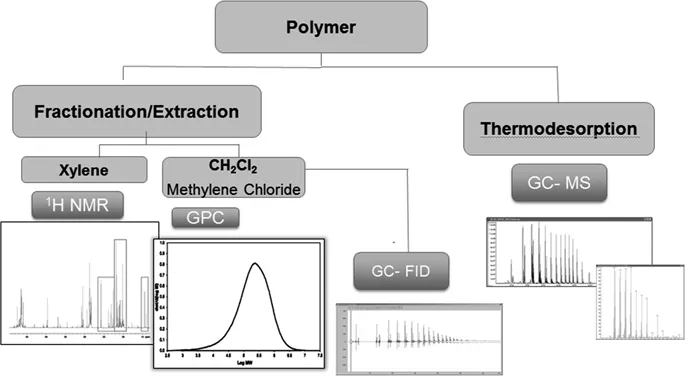
- 273 pages
- English
- ePUB (mobile friendly)
- Available on iOS & Android
About this book
Mass spectrometric techniques have developed over recent years to offer ever increasing solutions to solving problems in food processing and packaging. Even the smallest amount of contamination in food can cause a problem for food production companies, thus they are keen to find speedy and efficient quality control methods.
This book outlines how ingredients and their interrelationship with processing and packaging have developed with the exploitation of mass spectrometry and gives practical protocols to stake holders showing the flexibility of this technique.
With huge relevance worldwide, this book will appeal to food packaging scientists and mass spectrometry practitioners alike.
Frequently asked questions
- Essential is ideal for learners and professionals who enjoy exploring a wide range of subjects. Access the Essential Library with 800,000+ trusted titles and best-sellers across business, personal growth, and the humanities. Includes unlimited reading time and Standard Read Aloud voice.
- Complete: Perfect for advanced learners and researchers needing full, unrestricted access. Unlock 1.4M+ books across hundreds of subjects, including academic and specialized titles. The Complete Plan also includes advanced features like Premium Read Aloud and Research Assistant.
Please note we cannot support devices running on iOS 13 and Android 7 or earlier. Learn more about using the app.
Information
The aim of this chapter is to describe and comment on analytical approaches for characterizing intentionally added substances (IASs) with specific migration limits (SMLs) and non-intentionally added substances (NIASs) present in polyolefins used in food contact applications. Current EU regulations require the monitoring of packaging material components that could migrate into food, to avoid possible safety and quality issues. Generally, an extraction step involving static headspace (SHS), dynamic headspace and solvent extraction is applied for this purpose. Mass spectrometry coupled with chromatography is the main technique that can provide quantification and identification in line with regulatory requirements. Also, flame ionization detection (FID) is widely used as it allows universal quantitation in many cases. The described techniques can be applied to most of the plastic materials used in food packaging. In this chapter, only polyolefin-based polymers are considered and examples are focused mainly on polypropylene (PP) and its copolymers.
1.1 Introduction
- ODOUR: According to current regulation:2 “… any material or article intended to come into contact directly or indirectly with food must be sufficiently inert to preclude substances from being transferred to food in quantities large enough to endanger human health or to bring about an unacceptable change in the composition of the food or a deterioration in its organoleptic properties.” This means that it is necessary to monitor packaging material components that could migrate into food, deteriorating safety and quality, starting from a low molecular weight.
- NIASs: According to EFSA (European Food Safety Association),3 reaction products and impurities (NIASs) that are not included in the EU list of authorized substances in EU Regulation No. 10/2011 are required to be risk assessed, irrespective of their source or intended function. Oligomers are also considered as NIASs. Their identification and quantification are required for risk assessment by Art. 19 of EU Food Contact Regulations 10/2011/EC, specifically for those oligomers with molecular weight (MW) <1000 dalton (Da), as potential migrants of concern which, after transfer (migration) into food, may be physiologically resorbed after ingestion.
1.2 Evaluation of Analytical Approaches



Table of contents
- Cover
- Halftitle
- Series editor
- Title
- Copyright
- Contents
- Chapter 1 Risk Assessment of Plastic-based Food Contact Materials: Focus on Polyolefins 1
- Chapter 2 Food Contact Paper and Paperboard: Examples of Gas and Liquid Chromatography Determinations 35
- Chapter 3 Additives, Inks and Other Migrant Substances in Food Contact Materials 48
- Chapter 4 Adhesives in Food Packaging 82
- Chapter 5 Volatile Compounds Through and from Packaging 105
- Chapter 6 Migration and Sensory Changes in Packaged Food Products 139
- Chapter 7 Risk Assessment of Plastic Packaging for Food Applications 163
- Chapter 8 Non-target/High-resolution Mass Spectrometric Strategies Combined with Proper Data Handling and Software Elaboration Applied to Food Contact Materials Issues 192
- Chapter 9 Migration of Nanomaterials from Food Contact Materials 226
- Chapter 10 Solutions Commonly Applied in Industry and Outsourced to Expert Laboratories 245
- Subject Index